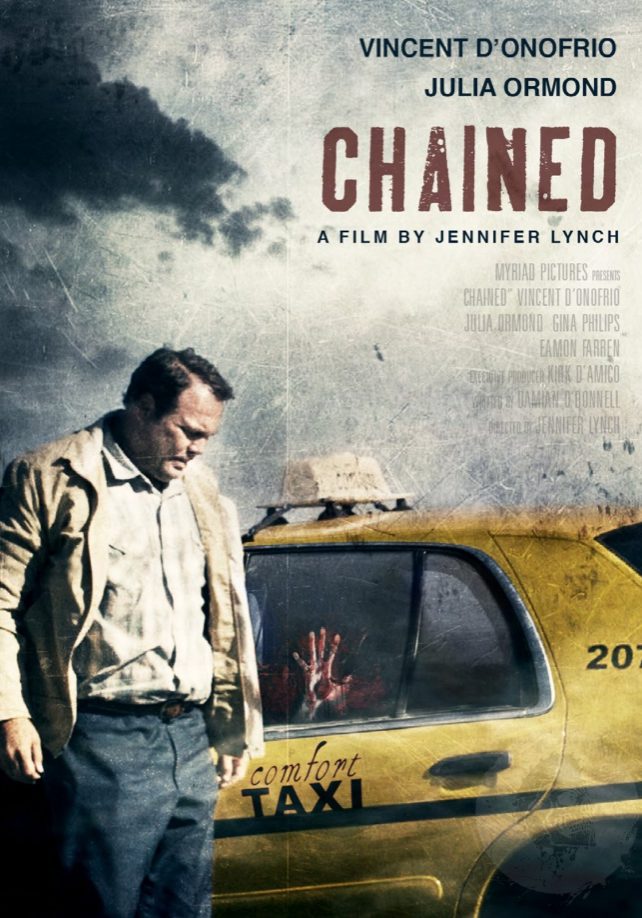Unshackling Fear: “Chained” (2012)
From the opening scene of Jennifer Lynch’s “Chained,” where a seemingly simple taxi ride takes a devastatingly dark turn, we’re strapped into a macabre narrative that promises to twist the viewer’s psyche as much as the characters’ lives are contorted. Released in 2012, “Chained” presents a gripping tale of a young boy, Tim, who, after witnessing his mother’s murder, is forced into servitude by a psychopathic taxi driver named Bob. Lynch sets the stage for a chilling exploration of the captive-captor relationship that unfolds in the most harrowing of ways, detouring from the typical slasher fare into the realms of psychological torment.
The Inescapable Labyrinth of Dread
“Chained” excels in constructing an atmosphere thick with despair and helplessness. The film’s horror seeps through each scene not with supernatural entities or otherworldly scares, but with a much more realistic portrayal of a predator and his unwilling protégé. The film’s sense of foreboding is built upon the grimy, claustrophobic environment that confines our characters both physically and mentally. Jennifer Lynch navigates the directorial landscape with a morose hand, guiding viewers through tension-filled corridors of anticipation that amplify fear without resorting to cheap thrills.
Cinematography and Visuals
Visually, “Chained” is both unflinching and restrained. The film’s cinematography uses desaturated colors and stark contrasts to breathe life into the hopeless world of its protagonists. Unconventional camera angles and lingering shots create a voyeuristic feeling, adding to the discomfort of witnessing the young boy’s captivity and transformation. The absence of flashy special effects allows the narrative to hinge on the rawness of the environment and characters, creating a believable tapestry of dread and horror.
Soundtrack and Sound Effects
The film’s sound design is a silent accomplice to the building terror. The soundtrack is sparing yet effectively haunting, with minimal ambient noise that drops out at critical moments to accentuate the raw dialogue and the chilling sounds of Bob’s methodical movements. The stillness achieved by the lack of sound at times becomes deafening, amplifying the emotional intensity of pivotal scenes.
Performances that Anchor the Horror
Performances in “Chained” tread the fine line between terrifying and heartbreaking. Vincent D’Onofrio as Bob delivers a powerhouse performance, incorporating nuance into a character that could easily have been one-dimensional in less experienced hands. Eamon Farren’s portrayal of the young Tim is a journey of distress and transformation that appears incredibly genuine and emotionally taxing. Together, they elevate the horror through their believability, making each scene of psychological warfare even more distressing.
Horror Mechanics and Thematic Depth
The film engages primarily with psychological horror, delving deep into manipulative relationships and the impact of prolonged exposure to evil. “Chained” skirts the edges of body horror with its raw depictions of violence, yet the true terror lies in the degradation of Tim’s innocence. Additionally, it serves as a commentary on the cyclic nature of abuse and the concept of learned behavior, giving it layers of thematic depth that resonate beyond the immediate scares.
Evaluating “Chained”: A Visceral Journey into Darkness
For those seeking a classic horror experience filled with jump-scares and supernatural occurrences, “Chained” may not satisfy. Instead, it finds its success in igniting a different kind of fear—the terror of the human condition and how close to monsters we can all potentially become. Its psychological approach is a slow burn, methodically paced to dissect the mind rather than just aiming for visceral reactions. This is a film that is both frightening and thought-provoking, achieving a sense of realism that is often harder to shake than traditional horror tropes.
Horror aficionados who appreciate a dive into the darker recesses of human nature will find “Chained” compelling. It might be too intense for casual viewers or those sensitive to graphic depictions of violence and mental manipulation. When placing it against the broader horror landscape, it shares a kinship with films that focus on captor-captive dynamics but stands apart for its commitment to an intimate portrayal of evil.
Final Assessment: Bound to Disturb
In conclusion, Jennifer Lynch’s “Chained” is a stark and brutal foray into psychological horror. It features standout performances and a calculated directorial approach ensuring the oppressive tone is felt in every frame. The strengths lie in its commitment to realism and the introspective horror it conjures, with its weaknesses possibly seen in its slower pace and heavy subject matter that may not appeal to everyone. Those who choose to embark on this grim narrative should be prepared for a disturbingly deep dive into the psyche of its characters. Viewer discretion is advised, as the movie pulls no punches in its depiction of violence and its aftermath.




